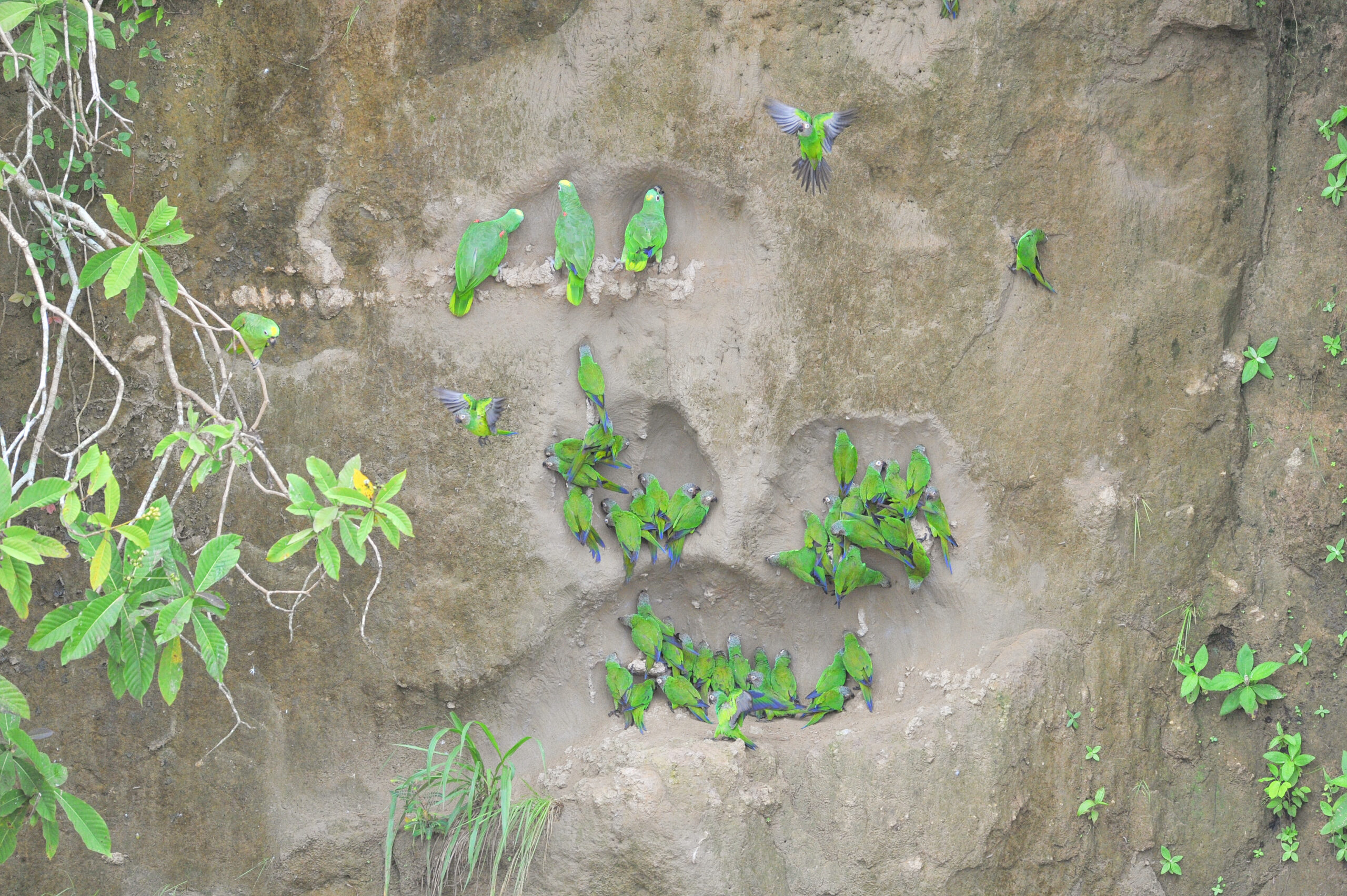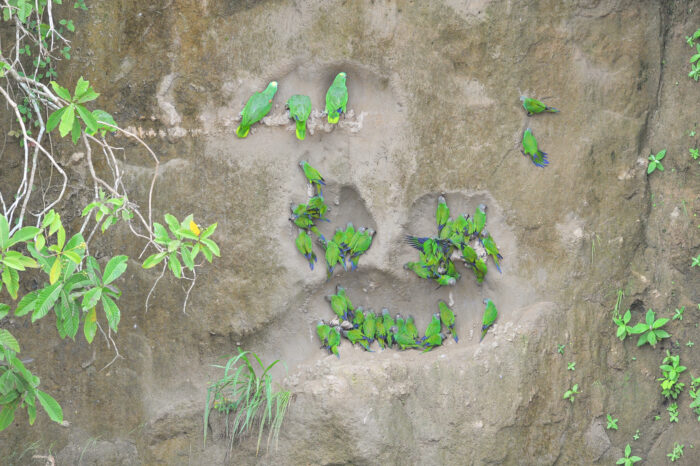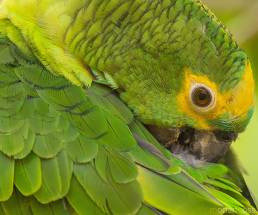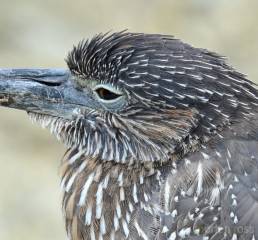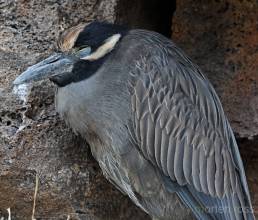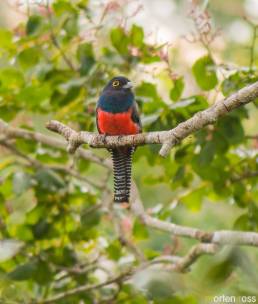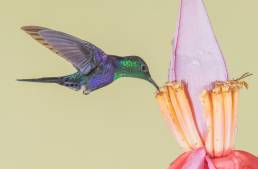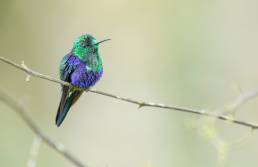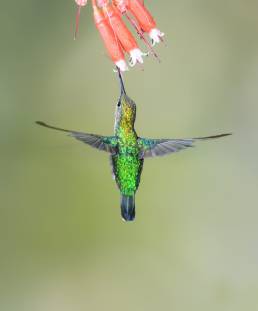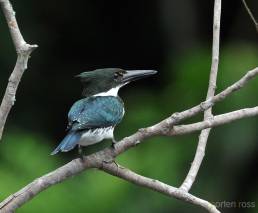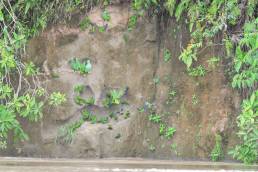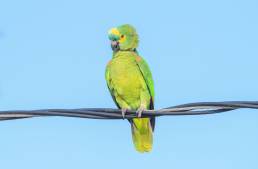Dusky-headed parakeets (Aratinga weddellii) dominate this clay lick, but larger species also visit and are thus easy to distinguish. The largest here are the yellow-crowned Amazons, which are easily identified by the yellow spot on the head.
This particular clay lick is only accessible by boat and you need powerful outboards to equalize the very strong currents and hold the position. Doing so with a canoe is impossible with the water level I experienced (2 metre higher in one day), but perhaps possible when water levels are at their lowest.
Thus this is a rather protected, albeit open lick. Although access by boat is easy, and perhaps tempting to go all the way up to the lick, the boatsmen and the Anangu Community will always keep a non-intrusive distance. The focus distance is here 50 meters (164 feet).
When the parrots are not here it looks like someone has taken out large scoops of of the wall. If the clay continues to be to their liking it will turn into a small cave, as they will continue to dig their way one day at a time.
It’s good to know this lick is protected by the Anangu. Visiting the Napo Wildlife Center will ensure it continues.
Here the largest bird is a mealy parrot (Amazona farinosa). The greyish tint on the back and the wider white eye ring are keys to tell them apart.
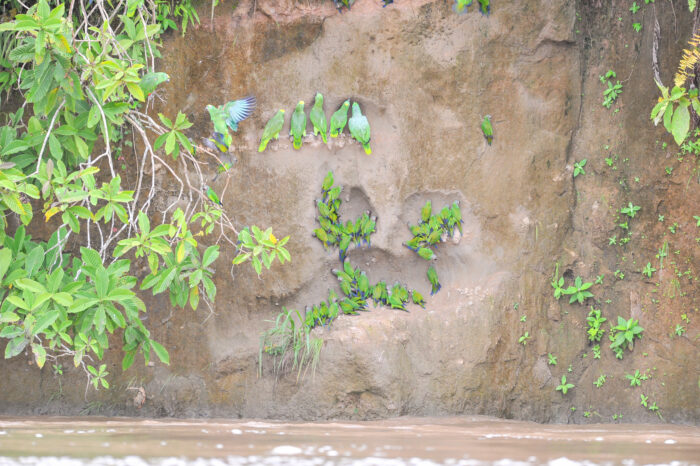
The largest one is the mealy parrot (Amazona farinosa).
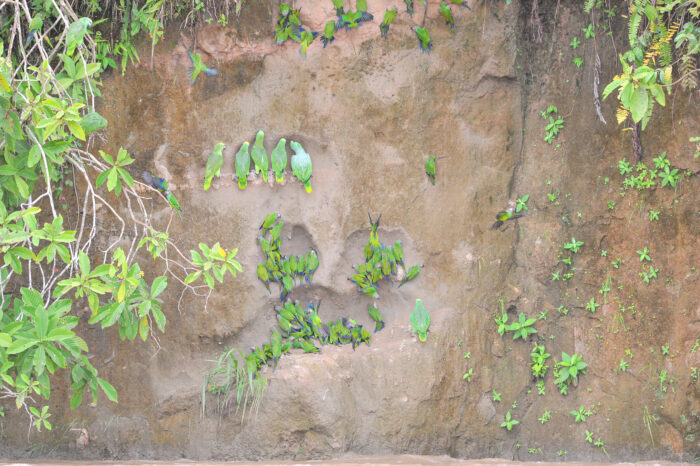
The largest ones are the yellow-crowned amazon (Amazona ochrocephala).
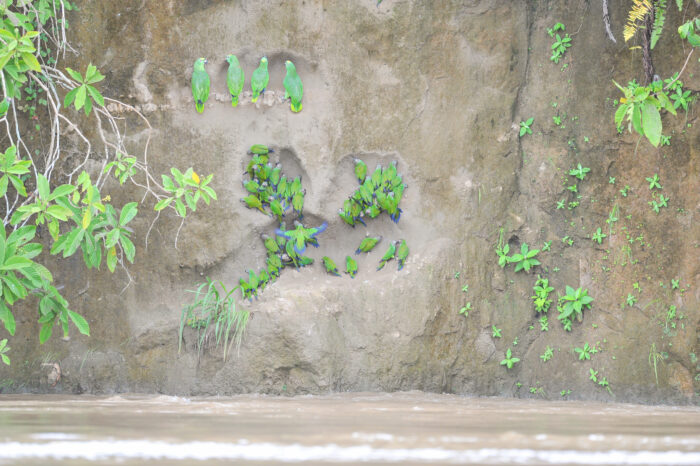
The largest one is the (mealy parrot (Amazona farinosa).
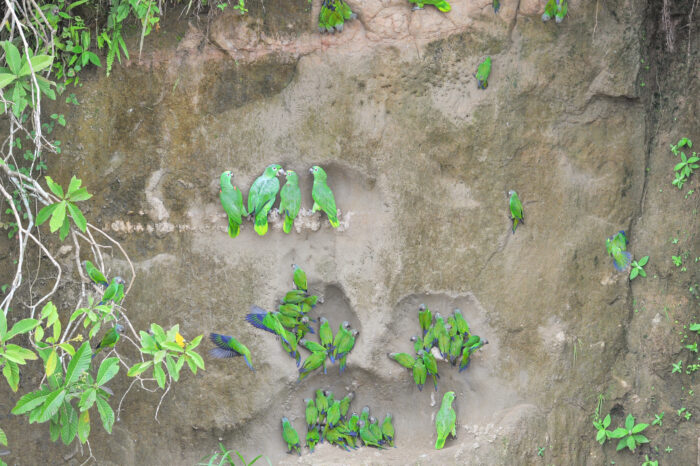
It sounds like this:
Napo River Clay lick
-0.523313,-76.390257
Last updated on 8 November 2024
